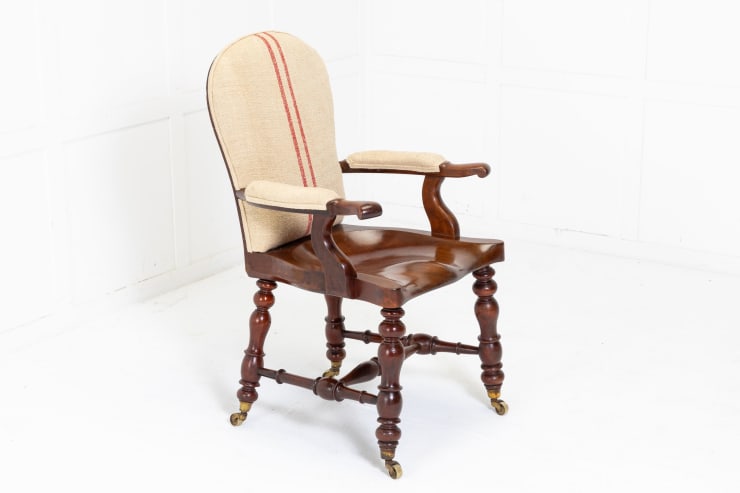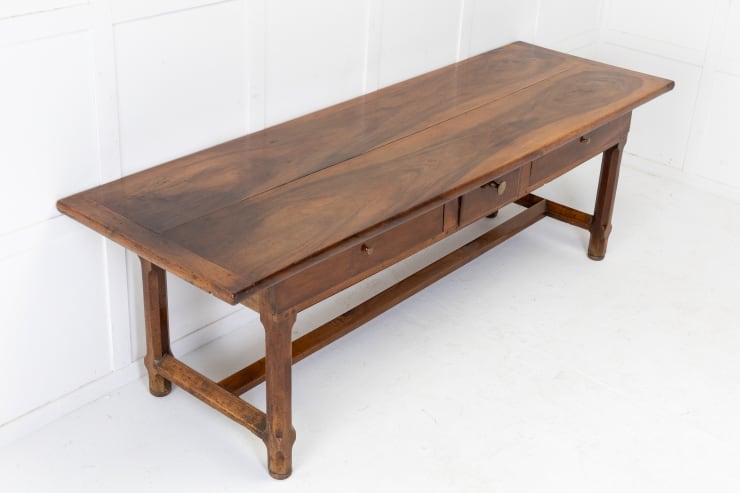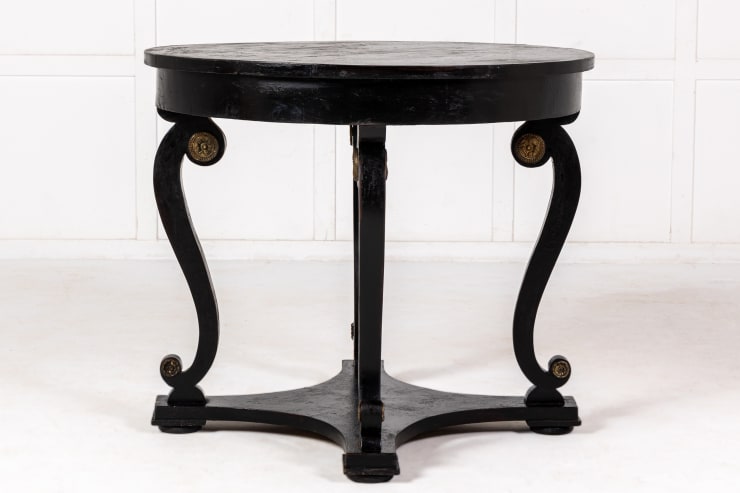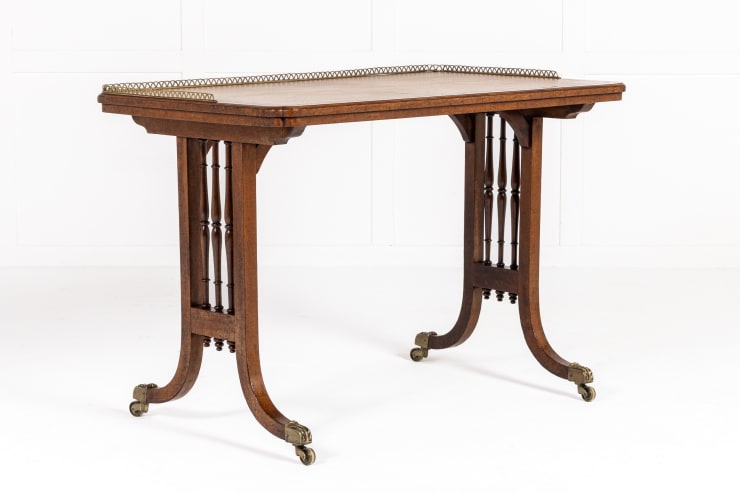-
ANTIQUES FROM THE 19TH CENTURY FROM CONSOLES TO CHAIRS, AND MIRRORS TO CHESTS.
The 19th century was a time of great innovation and change, particularly in the field of industry and technology. This century saw the rise of the Industrial Revolution, which had a profound impact on society and culture. As a result, antiques from this era can be particularly interesting and valuable.
Looking for somehting a little earlier? Why not browse our 17th Century Collection or 18th Century Collection.
-
OUR CURATED COLLECTION OF 19TH CENTURY ANTIQUES
-
HERE IS A LITTLE MORE ABOUT ANTIQUES FROM THE 19TH CENTURY...
The 19th century was a period of significant social, economic, and technological change, which had a profound impact on the production and consumption of antiques. Here is a brief history of antiques in the 19th century:
Early 19th Century:
- The early 19th century was a time of transition in the world of antiques, as the Industrial Revolution began to transform the way goods were produced and consumed.
- Traditional crafts such as woodworking and metalworking were increasingly replaced by mass production methods, resulting in a shift towards more standardized and less ornate designs.
- Many of the most valuable antiques from this era were imported from China and Japan, particularly porcelain and lacquerware.
Mid-19th Century:
- The mid-19th century saw a renewed interest in historical styles, particularly those from the Renaissance and Baroque periods.
- The Arts and Crafts movement emerged in Britain and later spread to the United States, promoting handcrafted goods and traditional craftsmanship.
- The rise of photography and other new media led to a growing interest in collecting historical artifacts and antiquities.
Late 19th Century:
- The late 19th century was a time of great innovation and experimentation in the world of design, as artists and craftspeople sought to break free from traditional styles and techniques.
- The Art Nouveau and Art Deco movements emerged, characterized by bold, flowing lines and geometric shapes.
- The rise of the middle class and increased access to consumer goods led to a proliferation of decorative objects, from silverware and glassware to textiles and furniture.
Overall, the 19th century was a time of great diversity and innovation in the world of antiques, as traditional crafts and designs were challenged by new technologies and changing social and cultural norms. Today, antiques from this era remain highly prized by collectors and enthusiasts for their historical and aesthetic value.
-
THE MOST POPULAR TYPES OF ANTIQUES IN THE 19TH CENTURY...
Here are some examples of popular antiques from the 19th century:
-
Furniture: The 19th century saw a wide range of furniture styles, from the ornate Rococo Revival to the more restrained Arts and Crafts movement. Victorian-era furniture, in particular, is highly sought after by collectors today.
-
Silverware: Silverware was a common luxury item in the 19th century, and many high-end pieces from this era are still in demand today. Look for pieces by well-known makers like Tiffany & Co., Gorham, and Reed & Barton.
-
Jewelry: The 19th century saw a resurgence of interest in jewelry design, particularly in the Art Nouveau and Art Deco styles. Pieces featuring precious gemstones and intricate metalwork can be particularly valuable.
-
Ceramics: The 19th century saw the rise of mass-produced ceramics, but many handcrafted pieces from this era are still highly prized by collectors. Look for pieces from well-known manufacturers like Wedgwood and Royal Doulton.
-
Glassware: The 19th century also saw the rise of industrial glass production, resulting in a wide range of glassware styles and designs. Look for pieces by makers like Tiffany, Steuben, and Lalique.
Overall, antiques from the 19th century can provide a fascinating glimpse into the history and culture of this transformative era.
-
-
RESTORATION TECHNIQUES FROM THE 19TH CENTURY...
Restoration techniques for antiques in the 19th century varied depending on the specific item and the materials it was made of. Here are some common restoration techniques used during this time period:
-
French polishing: This was a popular technique for restoring and refinishing wooden furniture. French polishing involves applying a thin layer of shellac to the surface of the wood and then rubbing it with a soft cloth until it achieves a high-gloss finish.
-
Gilding: Gilding involves applying a thin layer of gold leaf or gold powder to a surface. This was a popular technique for restoring and embellishing decorative objects, such as picture frames, mirrors, and statuettes.
-
Soldering: Soldering was used to repair broken metal objects, such as candlesticks or candelabras. The broken pieces were heated and then joined together using a soldering iron and metal solder.
-
Reupholstering: Reupholstering was a common technique for restoring upholstered furniture. This involved removing the old fabric and padding and replacing it with new materials.
-
Cleaning: Cleaning was an essential restoration technique for antiques of all types. This involved carefully removing dirt, grime, and stains from the surface of an object without damaging the underlying material.
It is worth noting that restoration techniques during the 19th century were often less sophisticated than those used today, and some restoration methods may have caused damage or degradation over time. It is important to work with a reputable antique restoration expert to ensure that your antique is restored in a way that preserves its historical and aesthetic value.
-
-
Our Quick Guides, News & Insights to Antiques Furniture
-

The French - Were they the pioneers of Antique Design?
January 31, 2023 -

19th Century Antiques: A Guide in Collecting and Appreciating Antiques
A Guide to Collecting and Appreciating Timeless Treasures March 15, 2023 -

The History and Evolution of Antiques
Explore the origins of antique collecting, styles and trends, and how antiques have shaped the world. April 2, 2023 -

Choosing the Perfect Antique Console Table for Your Home
Understand, Define and Integrate -

A Journey Through Console Table History: From Renaissance Elegance to Art Deco Glamour
-

The Art of Acquiring and Adorning Antique Desks
Mastering the Craft of Elevating Your Workspace with Vintage Elegance September 8, 2023 -

Investing in Elegance: How Antique Furniture Adds Value to Your Home
Enhancing Home Value Through Antique Furniture Investment September 10, 2023 -

The Stories Behind Antique Furniture: History and Significance
Exploring the Rich History and Cultural Significance of Antique Furniture September 12, 2023 -

Elegance Meets Modernity: Integrating Antique Furniture in Contemporary Decor
The Art of Blending Antique Furniture with Contemporary Decor September 14, 2023 -

Antique Desks and Interior Design: A Match Made in Vintage Heaven
Transforming Your Space with Timeless Elegance September 9, 2023 -

Investing in the Past: The Resilience of Antique Desks
Why Antique Desks Are More Than Just Furniture - They're Timeless Investments September 17, 2023 -

Antique Mirrors: A Reflection of History and Style
Exploring the History and Stylish Allure of Antique Mirrors September 13, 2023 -

Why Antique Mirrors Never Go Out of Style: A Closer Look
The Timeless Appeal of Antique Mirrors Explored August 14, 2023 -

Harmonizing History and Aesthetics: Why Antique Dealers and Interior Designers Make the Perfect Pair
October 31, 2023 -

Antiques and Aesthetics: How Interior Designers Boost the Antique Business
November 2, 2023 -

A Win-Win Partnership: Antique Dealers and Interior Designers
Discuss the mutual benefits of collaboration, from increased sales for antique dealers to enhanced design portfolios for interior designers. November 3, 2023 -

Buying British Antiques from the US: A Treasure Trove Awaits
January 1, 2024 -

Conquering the Pond: Why Buying British Antiques from the US is Easier Than You Think
January 1, 2024 -

A Treasure Trove in the Heart of England:
Unveiling Leicestershire Antiques with Lee Wright Antiques May 16, 2024
-














































